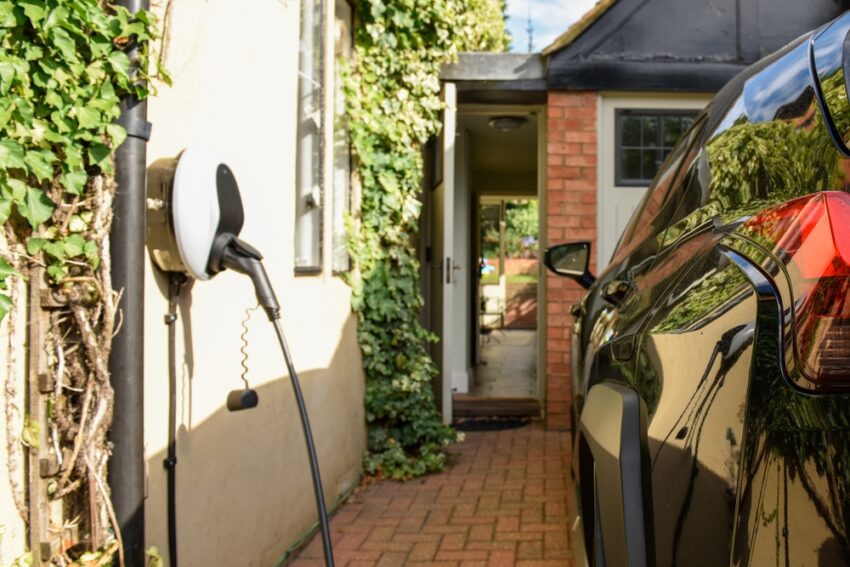
Maximize EV Range: Pairing Solar & Battery Storage
Ever wondered how you could drive your electric vehicle longer while reducing your carbon footprint and energy costs?
Integrating solar power with battery storage systems presents an innovative solution for EV owners seeking to maximise their vehicle’s range while maintaining energy independence.
By combining solar panels with advanced battery storage technology, you can create a sustainable charging ecosystem that ensures reliable power for your EV, regardless of weather conditions or time of day.
This intelligent pairing extends your driving capabilities and transforms your home into a self-sufficient charging station that reduces reliance on traditional power sources.
Boosting EV Range with Integrated Solar and Storage
Smart integration of solar panels with advanced battery storage helps EV owners maximise their vehicle’s potential. Modern battery-electric cars can travel 114 to 450 miles simultaneously, making them ideal for daily commuting and long-distance trips.
Using a solar battery system at home creates a sustainable charging solution that reduces grid dependence. The solar and storage technology combination offers a decisive advantage for EV owners looking to extend their driving range.
By storing excess solar energy during peak production hours, you can charge your vehicle when needed, regardless of the time of day or weather conditions.
Here’s how integrated solar and storage enhance your EV charging experience:
- Creates reliable energy reserves for consistent charging
- Reduces electricity costs through smart energy management
- Provides backup power during grid outages
- Supports flexible charging schedules based on driving patterns
The efficiency gains from paired solar and battery systems make a real difference in daily EV use. You can adapt charging routines to match your energy production peaks and customise storage capacity to fit your driving needs.
This setup lets you maintain optimal charge levels while minimising reliance on traditional power sources.
Impact of Solar Exposure on Energy Yield
The performance of solar panels directly influences how much power you’ll have available to charge your electric vehicle.
The intensity of sunlight hitting your panels plays a significant role—increasing solar irradiance from 400 W/m² to 1000 W/m² can boost system output by 47%. This significant jump in energy production means more stored power for your EV charging needs.
Getting the most from your solar setup requires careful attention to several key factors. Here’s what you’ll need to focus on to maximise your system’s performance:
- Strategic panel placement to catch peak sunlight hours
- Proper tilt angles based on your location’s latitude
- Regular cleaning to remove dust and debris
- Seasonal adjustments to match sun path changes
- Monitoring shade patterns from nearby structures or trees
By fine-tuning these elements, you can create an efficient charging system that makes the most available sunlight. The proper setup ensures your panels capture maximum solar energy during peak production hours, providing reliable power for your home and EV charging needs.
Regular upkeep of your solar installation helps maintain optimal performance year-round, giving you consistent access to clean energy for your electric vehicle.
Unleashing the Power of Energy Management Systems
(EMS) have transformed how homeowners handle their EV charging needs. These advanced platforms provide precise control over power distribution, helping homeowners make the most of their homes’ energy resources.
With real-time monitoring capabilities, these systems can shift between different power sources based on current conditions, ensuring your EV gets charged efficiently while keeping household operations running smoothly.
The key advantages of modern EMS platforms extend beyond basic power management. Here’s what makes these systems particularly valuable for EV owners:
- Scheduling features that automatically adjust charging times based on electricity rates
- Dynamic load balancing to prevent circuit overload during peak usage
- Continuous monitoring of battery health to extend system lifespan
- Automated switching between solar, battery, and grid power for optimal efficiency
- Real-time energy consumption tracking through user-friendly interfaces
The intelligent algorithms in these systems play a crucial role in maintaining your battery’s health. By implementing state-of-health monitoring, the EMS can prevent excessive wear while maximising the available power for your EV charging needs.
This balanced approach helps reduce dependency on grid power during expensive peak periods, leading to substantial cost savings over time while ensuring your home’s energy system operates at peak performance.
Contributing to Grid Stability with EV Batteries
The rise of electric vehicles presents an exciting opportunity to reshape our energy landscape. Electric car batteries aren’t just for driving—they’re becoming vital parts of a smarter energy grid. These batteries can store excess power during off-peak hours and feed it back when demand spikes, creating a more balanced and efficient system.
The power of EV batteries extends far beyond personal transportation. With 40 million EVs expected on roads by 2030, there is massive potential for distributed energy storage.
This network of mobile batteries can help smooth out power fluctuations, reduce strain during peak usage, and make renewable energy more reliable.
Here’s how EV owners can support grid stability:
- Using innovative charging features to charge during off-peak hours automatically
- Participating in vehicle-to-grid programs that allow power sharing
- Setting up home energy management systems to optimise charging schedules
- Monitoring and adjusting charging patterns based on grid demand
This shift to bi-directional charging creates a win-win situation. EV owners can save money by charging when rates are low, while utilities gain valuable storage capacity without building new infrastructure. It’s a practical example of how individual choices can strengthen the entire power grid while supporting the growth of clean energy.
Clean, Cheaper EV Charging
Integrating solar panels and battery storage systems represents a transformative solution for EV owners seeking to maximise their vehicle’s range while minimising environmental impact.
Through intelligent energy management and strategic system design, drivers can create a self-sustaining ecosystem that powers their daily commutes while reducing dependency on the grid.
By embracing this synergy between solar power and battery storage, EV owners secure reliable charging capabilities and contribute to a more resilient and sustainable energy future. We’re driving toward a cleaner tomorrow where renewable energy and electric mobility work perfectly.





